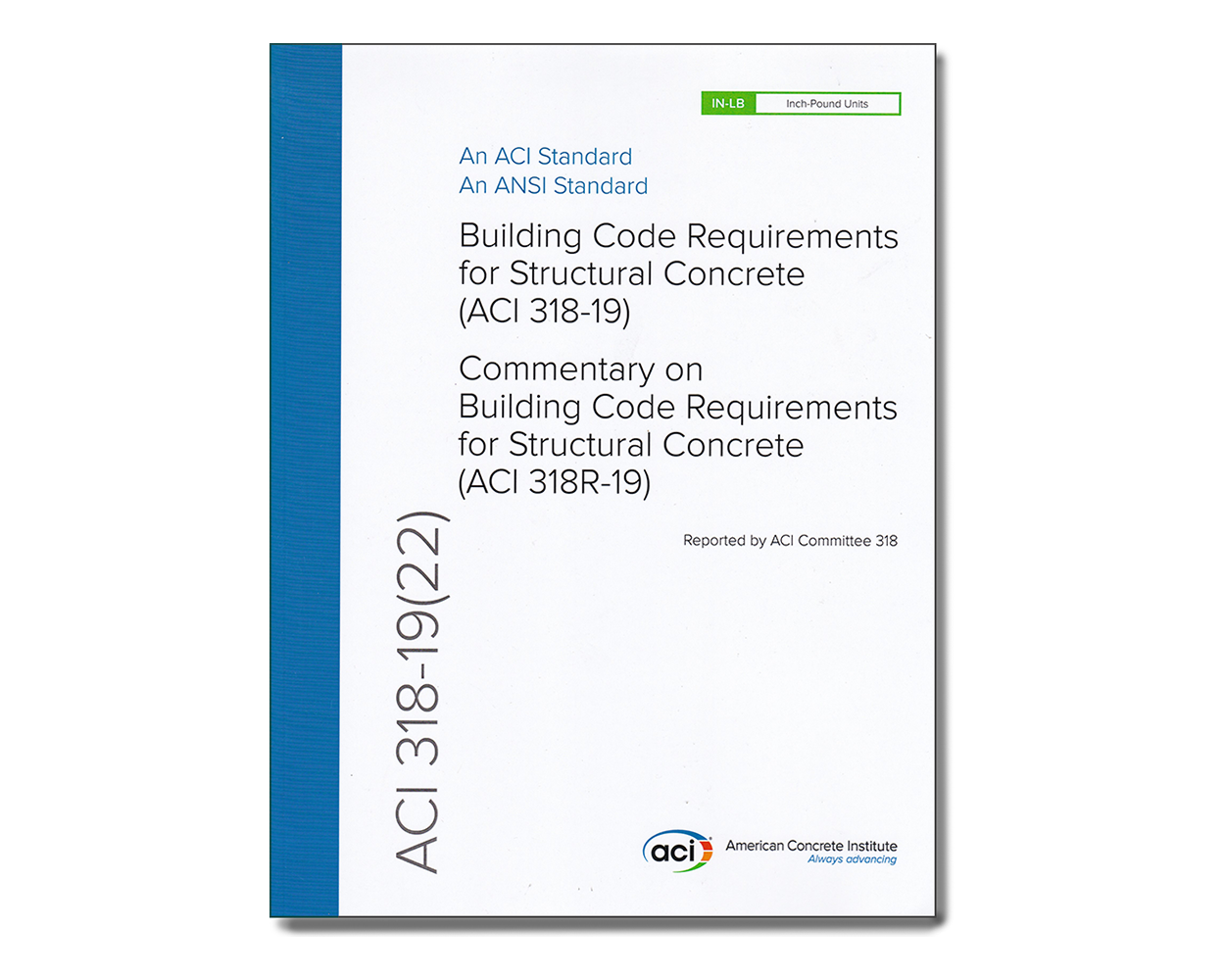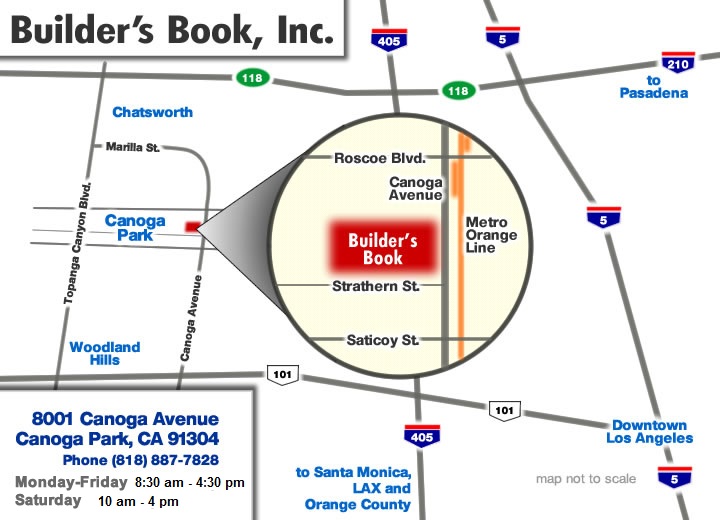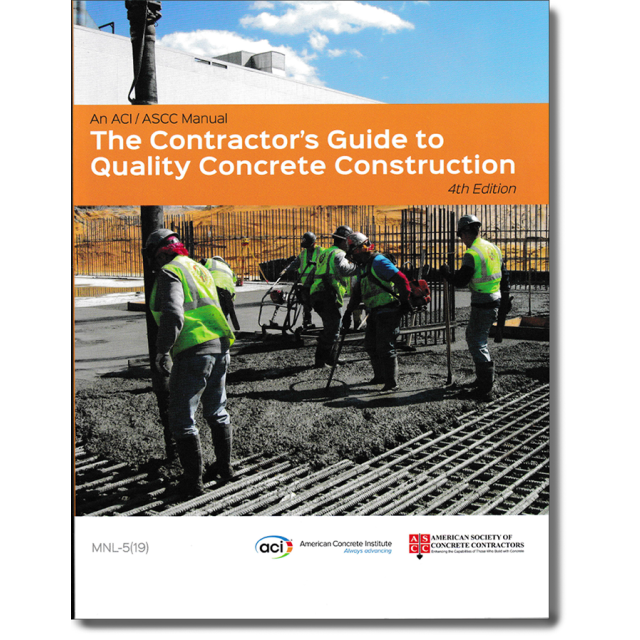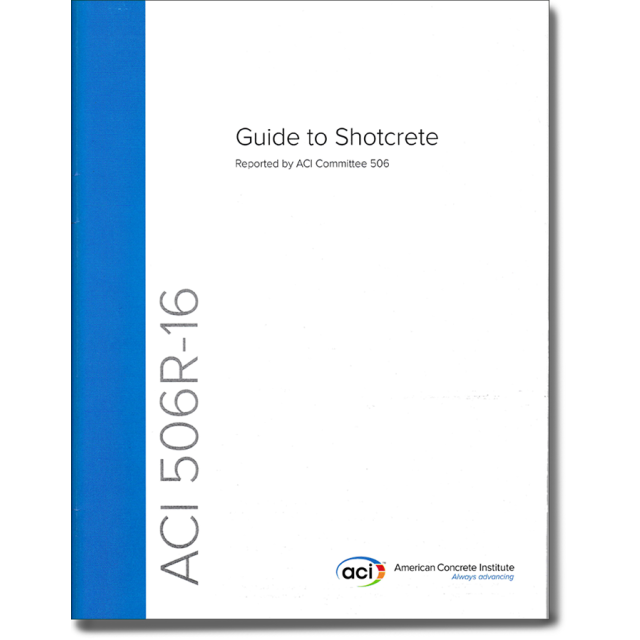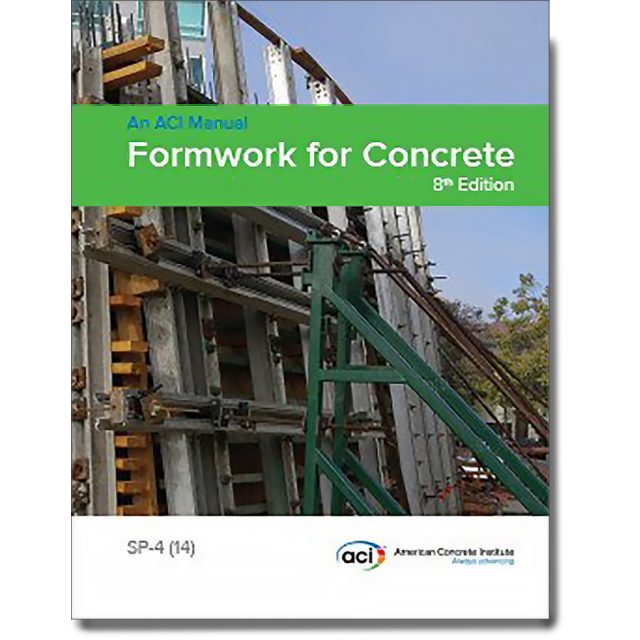ACI CODE-318-19(22): Building Code Requirements for Structural Concrete and Commentary
Reapproved for 2022
Introduction:
Welcome to the revolutionary realm of structural concrete design encapsulated in the ACI CODE-318-19(22): Building Code Requirements for Structural Concrete and Commentary. This unparalleled resource sets the gold standard for minimum requirements, materials, design, and detailing of structural concrete, encompassing both buildings and nonbuilding structures. Developed through an ANSI-approved consensus process, this Code reflects the pinnacle of industry standards, addressing a myriad of structural systems, members, and connections. Let's embark on an in-depth exploration of its key features, the diverse topics it covers, insights on how to effectively use it, identifying the broad spectrum of individuals who can benefit, and culminate with a profound conclusion on its pivotal role in the world of structural concrete design.
Key Features:
-
Comprehensive Coverage: The Code spans the entire gamut of structural concrete, including cast-in-place, precast, shotcrete, plain, nonprestressed, prestressed, and composite construction.
-
Reorganization for Clarity: The 2014 reorganization of the Code is perpetuated, presenting design and detailing requirements in chapters dedicated to specific subjects, facilitating ease of navigation and understanding.
-
Color Illustrations: A pioneering move in the industry, this edition introduces color illustrations, enhancing clarity and providing an unprecedented visual aid for users.
-
Utility Chapters: Information common to the design of multiple members is consolidated in utility chapters, streamlining the design process for efficiency.
-
Adoption by Reference: The Code is structured for easy adoption by reference in a general building code, allowing seamless integration without alterations to its language.
Topics Covered:
-
Structural System Requirements: Delve into the intricacies of structural system requirements, ensuring a holistic understanding of the foundational principles governing structural concrete design.
-
Earthquake-Resistant Structures: Navigate through Chapter 18, dedicated to earthquake-resistant structures, providing crucial insights into seismic design considerations.
-
Serviceability: Chapter 24 focuses on serviceability, elucidating aspects that contribute to the long-term performance and functionality of structural concrete.
-
Strength Evaluation of Existing Structures: Gain expertise in evaluating the strength of existing structures with the comprehensive coverage in Chapter 27.
-
Nonlinear Response History Analysis: Explore cutting-edge design verification techniques using nonlinear response history analysis in Appendix A, ushering in a new era of precision.
How to Use:
-
Certification Exam Preparation: Leverage this Code as an authoritative source for exam preparation, especially for those seeking certification in structural masonry inspection or related disciplines.
-
On-Site Reference: Carry the Code as an on-site reference, providing real-time guidance for inspectors, designers, and contractors involved in structural concrete projects.
-
Design Integration: Seamlessly integrate the Code's insights into the design phase, ensuring compliance with the latest standards and best practices.
Who Can Benefit:
-
Inspectors: Elevate inspection capabilities with the in-depth knowledge embedded in the Code, ensuring compliance with industry standards.
-
Designers: Empower design decisions with practical insights, aligning structures with both Code requirements and cutting-edge industry practices.
-
Contractors: Enhance construction projects with a guide that serves as a companion throughout the entire structural concrete construction process.
Conclusion:
In conclusion, the ACI CODE-318-19(22): Building Code Requirements for Structural Concrete and Commentary stands not just as a document but as a beacon guiding the industry through the intricacies of structural concrete design. With its rich features, comprehensive coverage, and innovative reorganization, this Code serves as a compass, leading the way toward excellence in structural design and construction. Whether you are an inspector ensuring compliance, a designer shaping the future of structures, or a contractor executing precision construction, this Code is your indispensable companion. Embrace the power of knowledge encapsulated in the Code, and embark on a transformative journey in the world of structural concrete design.
_______________________________________________________
The “Building Code Requirements for Structural Concrete” (“Code”) provides minimum requirements for the materials, design, and detailing of structural concrete buildings and, where applicable, nonbuilding structures. This Code was developed by an ANSI-approved consensus process and addresses structural systems, members, and connections, including cast-in-place, precast, shotcrete, plain, nonprestressed, prestressed, and composite construction. Among the subjects covered are: design and construction for strength, serviceability, and durability; load combinations, load factors, and strength reduction factors; structural analysis methods; deflection limits; mechanical and adhesive anchoring to concrete; development and splicing of reinforcement; construction document information; field inspection and testing; and methods to evaluate the strength of existing structures.
The Code was substantially reorganized and reformatted in 2014, and this Code continues and expands that same organizational philosophy. The principal objectives of the reorganization were to present all design and detailing requirements for structural systems or for individual members in chapters devoted to those individual subjects, and to arrange the chapters in a manner that generally follows the process and chronology of design and construction. Information and procedures that are common to the design of multiple members are located in utility chapters. Additional enhancements implemented in this Code to provide greater clarity and ease of use include the first use of color illustrations and the use of color to help the user navigate the Code and quickly find the information they need. Special thanks to Bentley Systems, Incorporated, for use of their ProConcrete software to produce many of the figures found in the Commentary.
Uses of the Code include adoption by reference in a general building code, and earlier editions have been widely used in this manner. The Code is written in a format that allows such reference without change to its language. Therefore, background details or suggestions for carrying out the requirements or intent of the Code provisions cannot be included within the Code itself. The Commentary is provided for this purpose.
Some considerations of the committee in developing the Code are discussed in the Commentary, with emphasis given to the explanation of new or revised provisions. Much of the research data referenced in preparing the Code is cited for the user desiring to study individual questions in greater detail. Other documents that provide suggestions for carrying out the requirements of the Code are also cited.
TABLE OF CONTENTS
Chapter 1—General
Chapter 2—Notation and Terminology
Chapter 3—Referenced Standards
Chapter 4—Structural System Requirements
Chapter 5—Loads
Chapter 6—Structural Analysis
Chapter 7—One-Way Slabs
Chapter 8—Two-Way Slabs
Chapter 9—Beams
Chapter 10—Columns
Chapter 11—Walls
Chapter 12—Diaphragms
Chapter 13—Foundations
Chapter 14—Plain Concrete
Chapter 15—Beam-Column and Slab-Column Joints
Chapter 16—Connections Between Members
Chapter 17—Anchoring to Concrete
Chapter 18—Earthquake-Resistant Structures
Chapter 19—Concrete: Design and Durability Requirements
Chapter 20—Steel Reinforcement Properties, Durability, & Embedments
Chapter 21—Strength Reduction Factors
Chapter 22—Sectional Strength
Chapter 23—Strut-and-Tie Method
Chapter 24—Serviceability
Chapter 25—Reinforcement Details
Chapter 26—Construction Documents and Inspection
Chapter 27—Strength Evaluation of Existing Structures
Appendix A—Design Verification Using Nonlinear Response History Analysis
Appendix B—Steel Reinforcement Information
Appendix C—Equivalence Between SI-Metric, MKS-Metric, And U.S. Customary Units of Nonhomogenous Equations in the Code
Commentary References
Index
| Price | $334.95 |
|---|---|
| Customer Service | We're Here To Help Monday through Friday - 8:30 am to 4:30 pm (Pacific) Order Questions: 8001 Canoga Avenue Canoga Park, CA 91304 US Phone: 800-275-2665 E-mail: sales@buildersbook.com |
| Description | Introduction: Welcome to the revolutionary realm of structural concrete design encapsulated in the ACI CODE-318-19(22): Building Code Requirements for Structural Concrete and Commentary. This unparalleled resource sets the gold standard for minimum requirements, materials, design, and detailing of structural concrete, encompassing both buildings and nonbuilding structures. Developed through an ANSI-approved consensus process, this Code reflects the pinnacle of industry standards, addressing a myriad of structural systems, members, and connections. Let's embark on an in-depth exploration of its key features, the diverse topics it covers, insights on how to effectively use it, identifying the broad spectrum of individuals who can benefit, and culminate with a profound conclusion on its pivotal role in the world of structural concrete design. Key Features:
Topics Covered:
How to Use:
Who Can Benefit:
Conclusion: In conclusion, the ACI CODE-318-19(22): Building Code Requirements for Structural Concrete and Commentary stands not just as a document but as a beacon guiding the industry through the intricacies of structural concrete design. With its rich features, comprehensive coverage, and innovative reorganization, this Code serves as a compass, leading the way toward excellence in structural design and construction. Whether you are an inspector ensuring compliance, a designer shaping the future of structures, or a contractor executing precision construction, this Code is your indispensable companion. Embrace the power of knowledge encapsulated in the Code, and embark on a transformative journey in the world of structural concrete design. _______________________________________________________ The Code was substantially reorganized and reformatted in 2014, and this Code continues and expands that same organizational philosophy. The principal objectives of the reorganization were to present all design and detailing requirements for structural systems or for individual members in chapters devoted to those individual subjects, and to arrange the chapters in a manner that generally follows the process and chronology of design and construction. Information and procedures that are common to the design of multiple members are located in utility chapters. Additional enhancements implemented in this Code to provide greater clarity and ease of use include the first use of color illustrations and the use of color to help the user navigate the Code and quickly find the information they need. Special thanks to Bentley Systems, Incorporated, for use of their ProConcrete software to produce many of the figures found in the Commentary.
Uses of the Code include adoption by reference in a general building code, and earlier editions have been widely used in this manner. The Code is written in a format that allows such reference without change to its language. Therefore, background details or suggestions for carrying out the requirements or intent of the Code provisions cannot be included within the Code itself. The Commentary is provided for this purpose.
Some considerations of the committee in developing the Code are discussed in the Commentary, with emphasis given to the explanation of new or revised provisions. Much of the research data referenced in preparing the Code is cited for the user desiring to study individual questions in greater detail. Other documents that provide suggestions for carrying out the requirements of the Code are also cited. TABLE OF CONTENTSChapter 1—General Chapter 2—Notation and Terminology Chapter 3—Referenced Standards Chapter 4—Structural System Requirements Chapter 5—Loads Chapter 6—Structural Analysis Chapter 7—One-Way Slabs Chapter 8—Two-Way Slabs Chapter 9—Beams Chapter 10—Columns Chapter 11—Walls Chapter 12—Diaphragms Chapter 13—Foundations Chapter 14—Plain Concrete Chapter 15—Beam-Column and Slab-Column Joints Chapter 16—Connections Between Members Chapter 17—Anchoring to Concrete Chapter 18—Earthquake-Resistant Structures Chapter 19—Concrete: Design and Durability Requirements Chapter 20—Steel Reinforcement Properties, Durability, & Embedments Chapter 21—Strength Reduction Factors Chapter 22—Sectional Strength Chapter 23—Strut-and-Tie Method Chapter 24—Serviceability Chapter 25—Reinforcement Details Chapter 26—Construction Documents and Inspection Chapter 27—Strength Evaluation of Existing Structures Appendix A—Design Verification Using Nonlinear Response History Analysis Appendix B—Steel Reinforcement Information Appendix C—Equivalence Between SI-Metric, MKS-Metric, And U.S. Customary Units of Nonhomogenous Equations in the Code Commentary References Index
|

